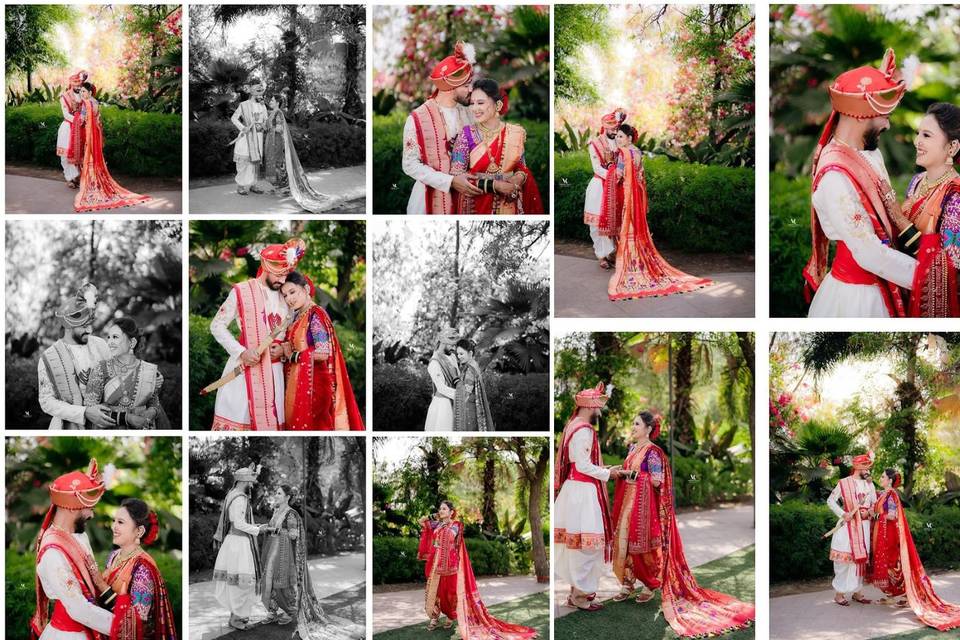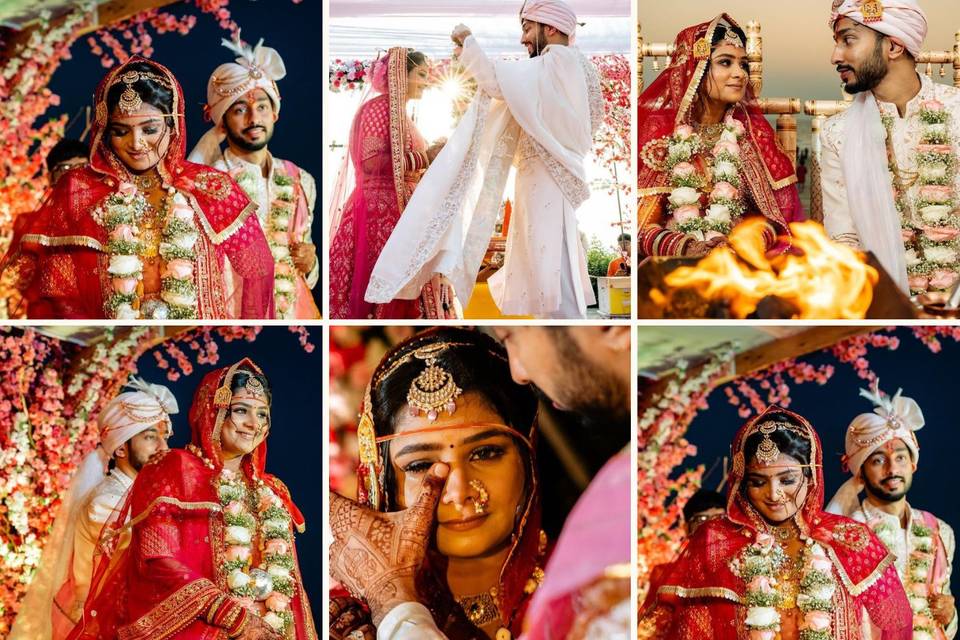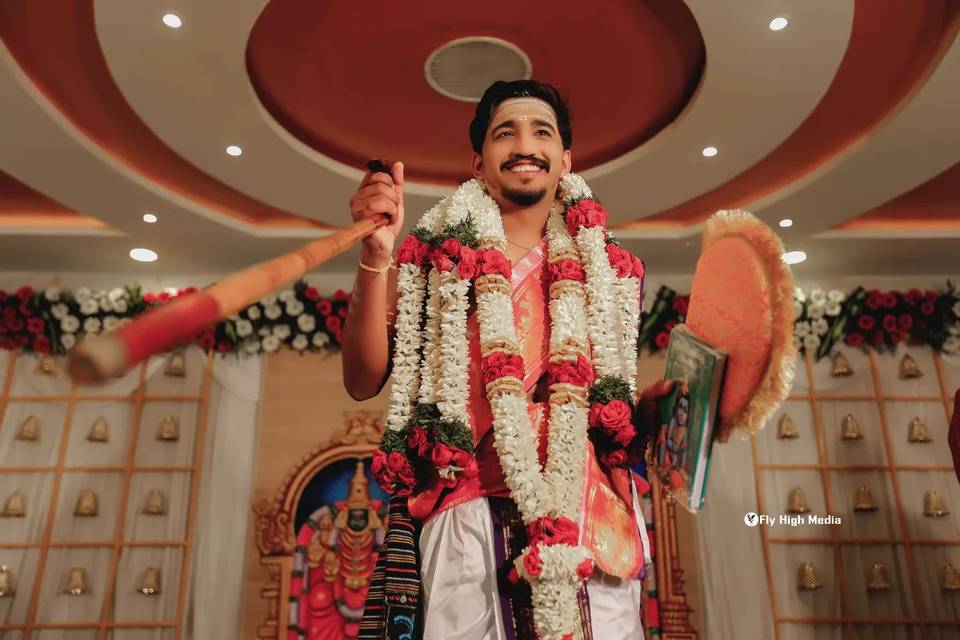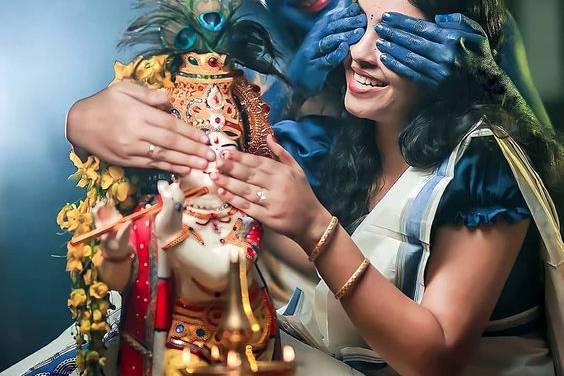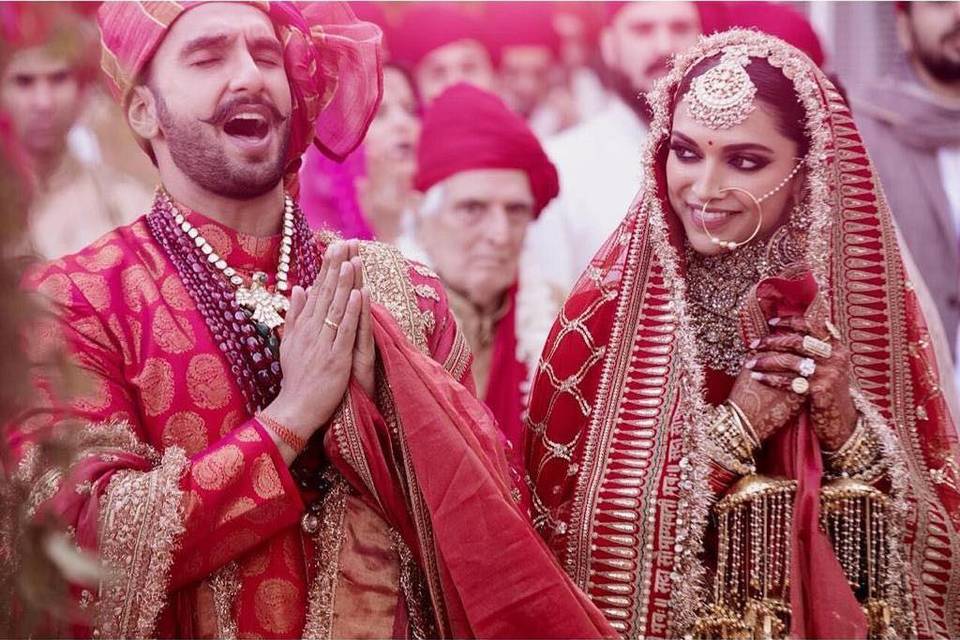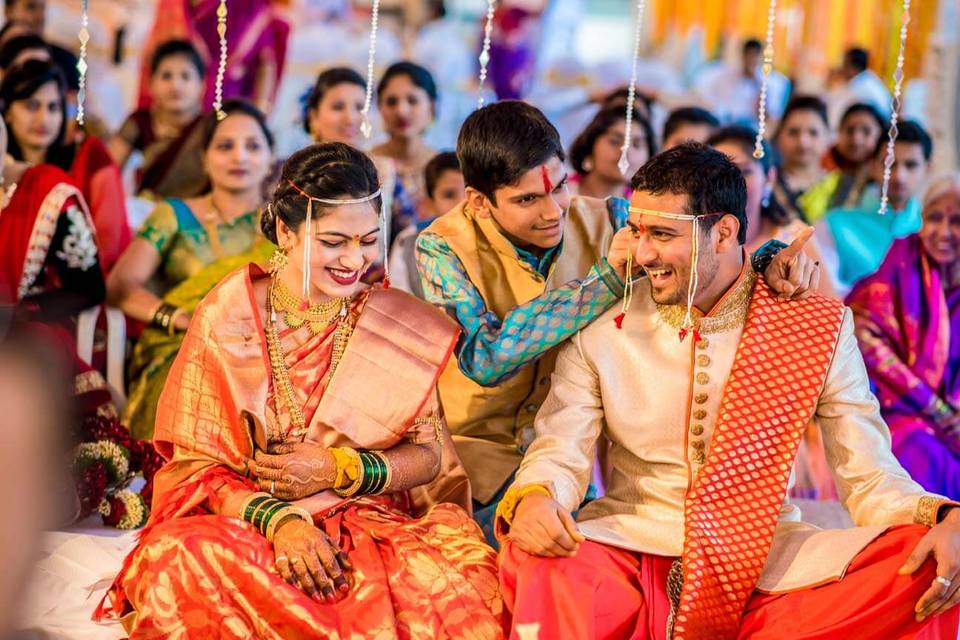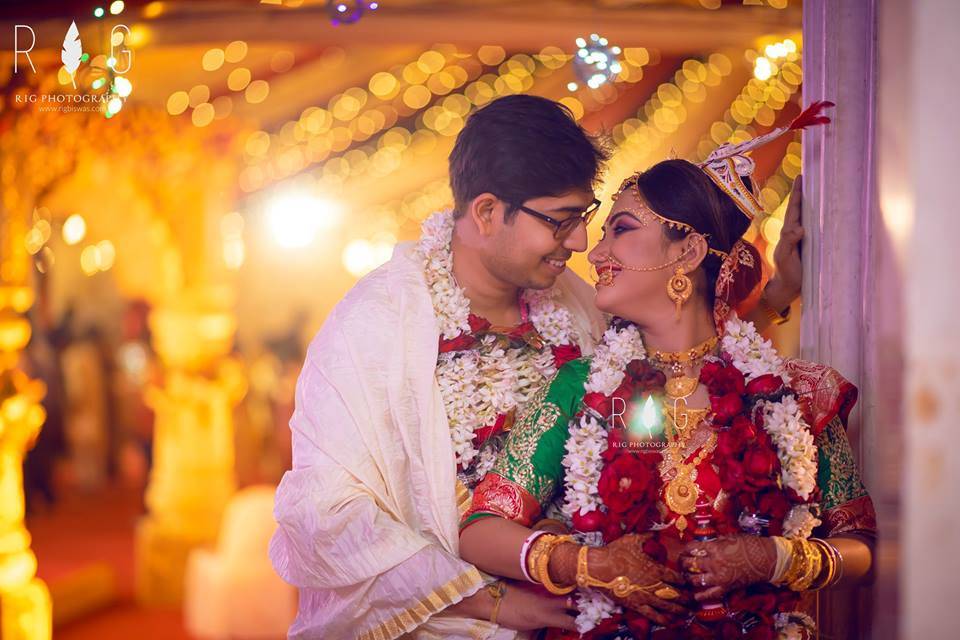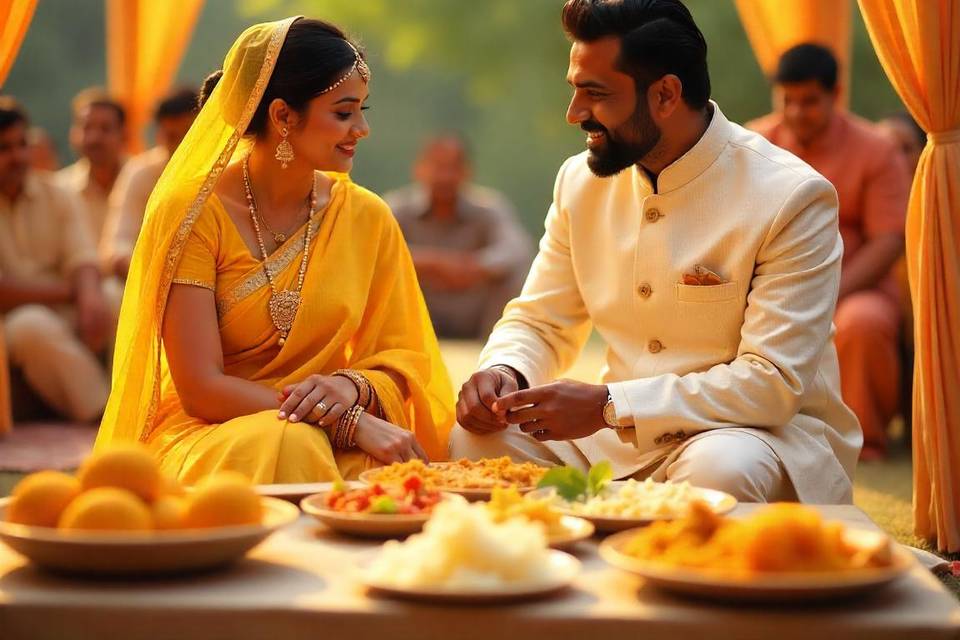How To Plan and Register an Arya Samaj Marriage in India?
Here is a deep dive into the traditions and ceremonies of an Arya Samaj Marriage and your ultimate guide to register one!
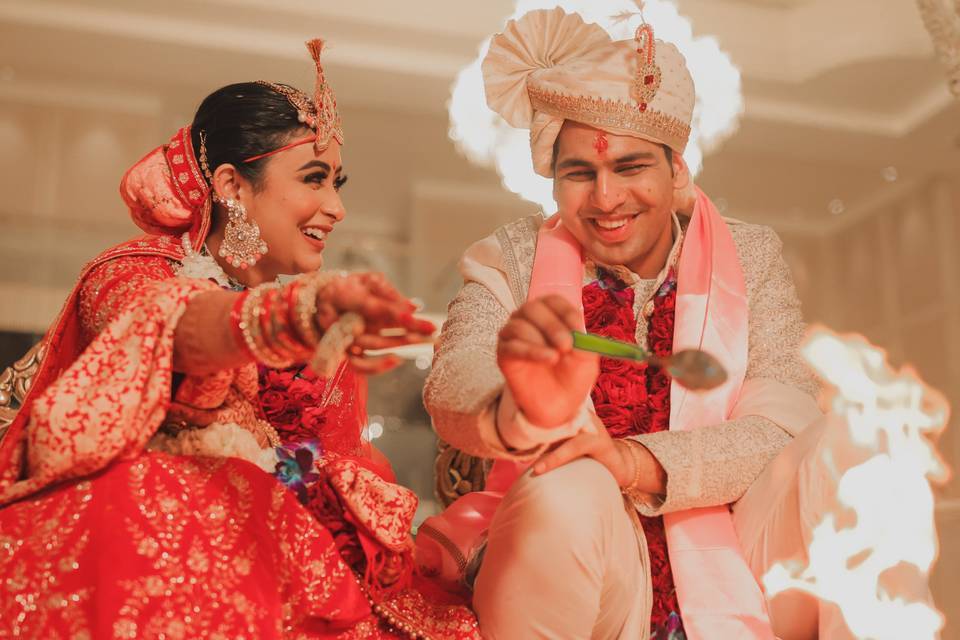

Contributing Writer: Ayushi Dwivedi
In India, marriage is seen not just as a contract but as a sacred sacrament, with the belief that matches are made in heaven. Couples are bound for life in a bond that transcends time. Weddings are celebrated in several unique ways in our diverse country. One fascinating tradition is the Arya Samaj marriage, which is known for its simplicity and inclusiveness. It’s ideal for modern couples who want to blend tradition with contemporary values.
Founded in 1875 by Swami Dayanand Saraswati, the Arya Samaj has been a beacon of progressive thinking in Indian society. It draws on Vedic traditions while rejecting outdated superstitions. Instead of focusing on the usual holy trinity, Arya Samaj weddings highlight the significance of fire (Agni) and the sun (Surya). This mix of ancient customs with a fresh perspective makes the Arya Samaj marriage intriguing and accessible. Let’s explore what makes this tradition unique, from its principles to its practices.
In this article:
- What Is Arya Samaj Marriage?
- How To Plan and Register an Arya Samaj Marriage in India?
- Is Arya Samaj Marriage Legal?
- All About Arya Samaj Marriage Certificate
Find Wedding Planners in India
What Is Arya Samaj Marriage?
Arya Samaj weddings are distinct from traditional Hindu weddings because Arya Samaj's followers do not believe in idol worship. Instead, they focus on the teachings of the Vedas, which emphasise simplicity and spiritual connection. These weddings are based on straightforward Vedic rituals. Unlike typical Hindu weddings, which can be elaborate and time-consuming, the Arya Samaj marriage process is concise, usually lasting no more than one to two hours. They revolve around a sacred fire, where Vedic hymns are chanted and explained to the couple, helping them understand the significance of their union. Here are the essential rituals that take place in an Arya Samaj wedding:
Pre-wedding Rituals
Arya Samaj marriages do not have any pre-wedding functions. However, millennials have started celebrating pre-wedding ceremonies at Hindu weddings, such as Sangeet night, the Haldi ceremony, and the Mehndi ceremony. This sure adds to the fun and joys of this already exciting occasion. Apart from that, only a few ceremonies happen before the wedding.
Bramhabhoj
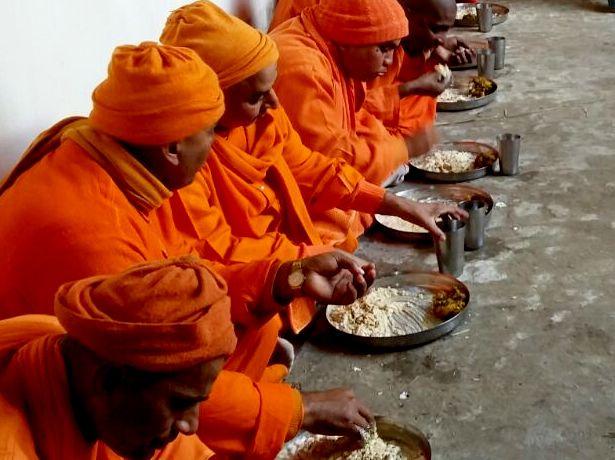
Image Courtesy: Himalayan Vedic World
This ceremony occurs on the morning of the wedding in an Arya Samaj marriage. It is a formal occasion where the Brahmins are feasted in both the bride’s and the groom’s homes. This ritual is considered very auspicious, marking the beginning of the wedding celebrations.
Chuda & Nath
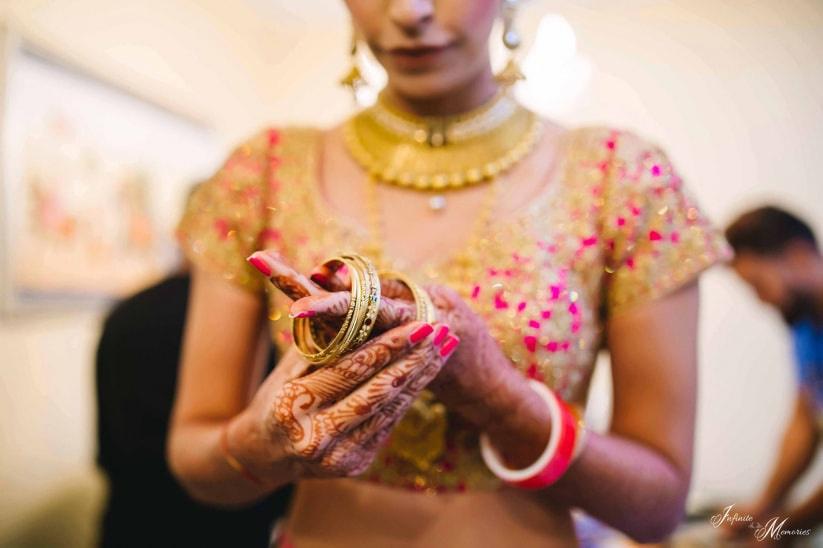
This regional ritual is most often seen among North Indian Arya Samaj's wedding followers. The bride's maternal uncle gifts her a set of twenty-one bangles (the bridal Chura) and a nose ring or the bridal Nath.
Wedding Rituals in an Arya Samaj Ceremony
In this type of wedding ceremony, there is an emphasis on the ritual chanting of Vedic hymns and the worship of Gods like fire (Agni) and sun (Surya) over gods like Shiva, Vishnu or Krishna, who were derived from the later verses of the same holy book of immense importance to the Hindus. Arya Samaj weddings are known for their simplicity and grace and are conducted by a priest at the Arya Samaj temple. The rituals of an Arya Samaji wedding/ Arya Samaj marriage are also open to members of any other religious order. We have compiled a list of rituals in the Arya Samaj marriage process so you can do it right.
Varmala & Swagat Vidhi
In an Arya Samaj marriage, the wedding ceremony commences with the bride and groom chanting holy Vedic verses. That is followed by the garland exchange ritual, where the bride puts the garland around the groom first. This symbolises the public acceptance of their new relationship. The Swagat Vidhi is the first step for the bride to welcome the groom to the wedding ceremony in an Arya Samaj marriage. The groom has to come to the Arya Samaj marriage temple to start the ceremonies as per the Arya Samaj marriage process.
Madhuparkaa

Image Courtesy: Miza Events
Madhuparka is a mixture of honey, curd, and cream. The bride gives the groom water to sprinkle on his feet three times—over his feet and body—and then drinks it the third time. Then, the groom repeats the same ritual for the bride and eats the pious mixture of Madhuparka after offering it to the almighty. This ritual in an Arya Samaj marriage is a beautiful gesture of love between the bride and groom.
Yagna & Kanyadaan
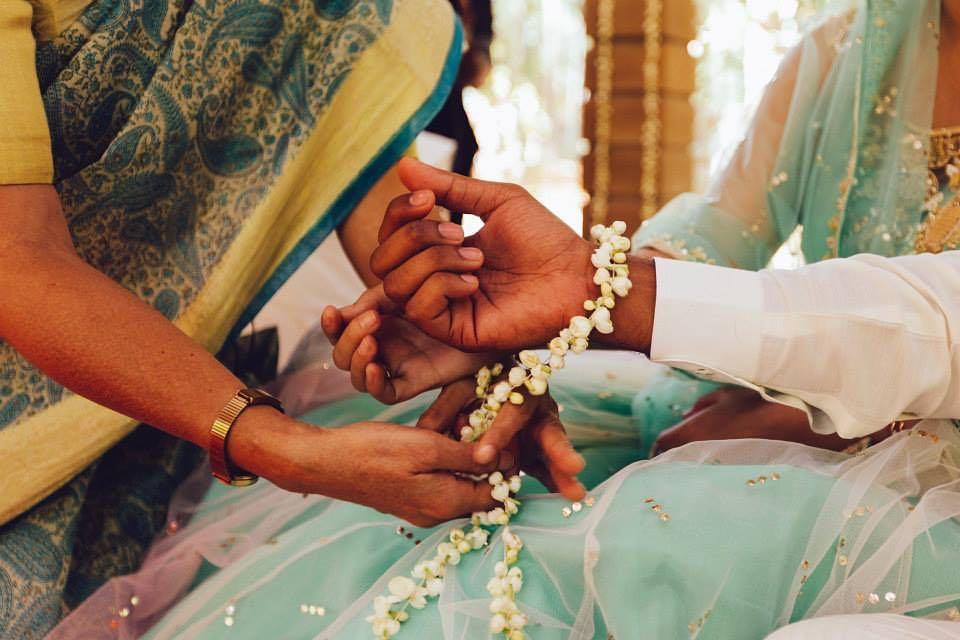
Image Courtesy: Nadia Mirza & Co
The groom in an Arya Samaj marriage is supposed to wear a sacred thread tied by the priest around his wrist. This symbolises the boy's transformation from boy to man to a responsible householder. During an Arya Samaj Marriage, the holy fire is worshipped, and many Vedic hymns, like the Gayatri mantra, are recited. It marks the transition of a couple from Brahmacharya to Grihastha Ashram.
Then Kanyadaan is the ritual in which the bride's father places his daughter’s hand in the groom's. This ritual symbolises that the father, henceforth, hands the responsibilities of his daughter to her husband. This tradition in an Arya Samaj marriage is very similar to the Kanyadaan ceremony in many other cultures in India.
Havan & Godan
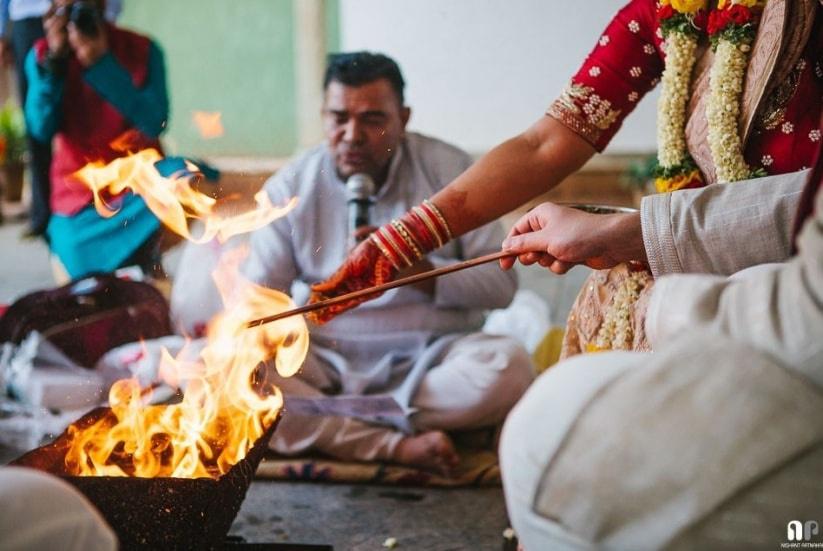
Image courtesy: Embedded eyes by Nishant Ratnakar
As non-believers of idol worship, fire plays a significant role in an Arya Samaj marriage. The sacred fire burning in the middle of the mandap serves as a holy witness. The pujari or gurukul brings the elements needed for performing the wedding rites. This ceremony is often followed by the Godan ceremony, which involves the gift of a cow or calf to the priests as alms. Nowadays, the equivalent amount of money is gifted rather than a live cow.
Pani Grahan Sanskar

Image Courtesy: The Creative World
The couple performs this ritual together by holding hands and chanting mantras, promising to love and care for each other and their needs throughout their lives. After this, the bride and the groom take one ‘parikrama’ around the holy fire.
Shilarohan
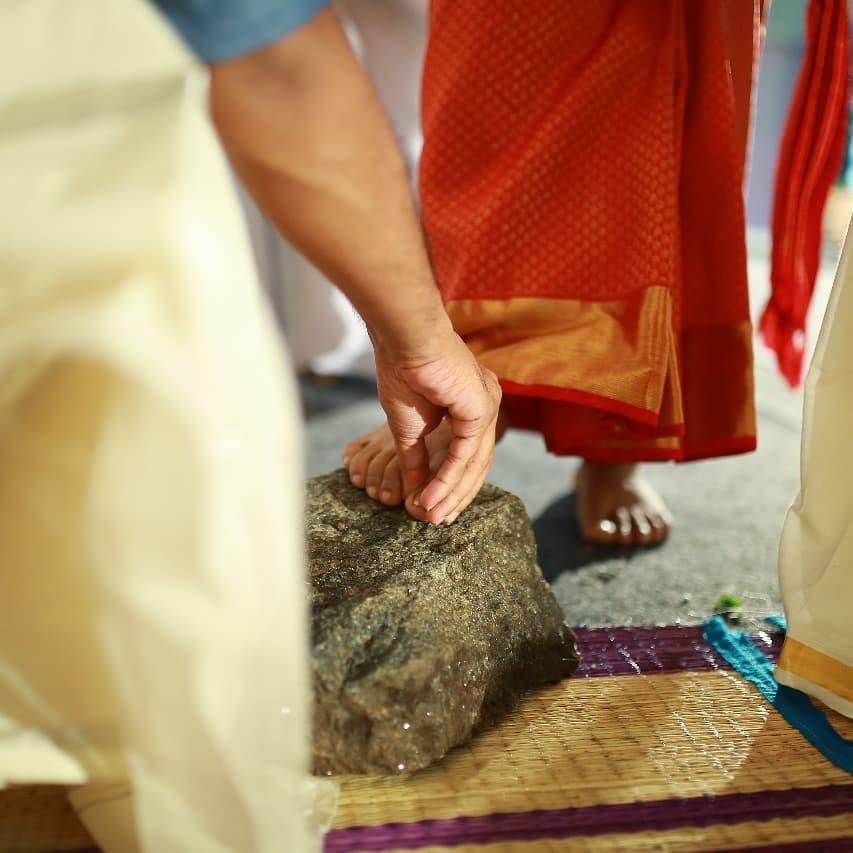
Image Courtesy: Swathy Seekumar
In this Arya Samaj Wedding ritual, the bride's mother places the bride's right foot on a stone while the groom chants mantras given by the pandit. The symbolism of this ritual specifies a solid relationship between the bride and the groom, just like the rock. This ritual also represents a prayer made by the couple to strengthen their relationship so that together, they can face life’s challenges and temptations.
Lajahom
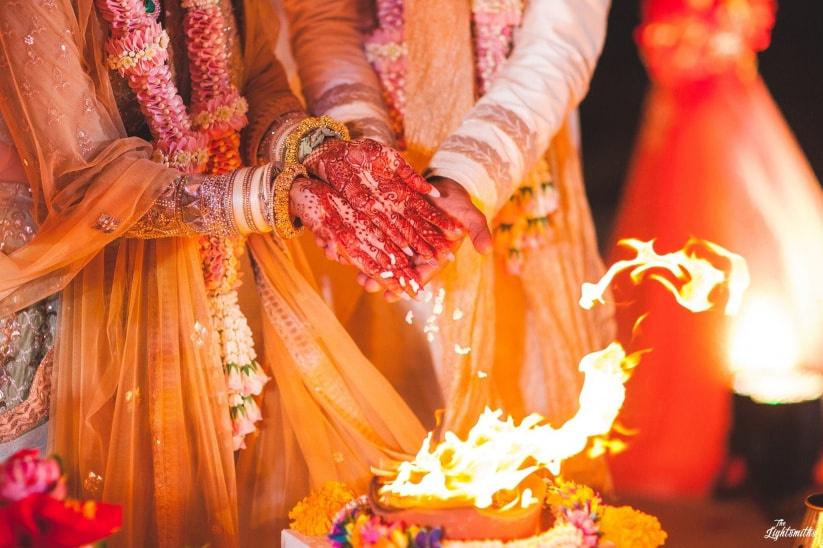
The ritual that follows Shilarohan is Lajahom. This ritual consists of offering Murmura, or puffed rice, to the Agni. Here, the bride and groom place their hands in the fire, and the bride's brother pours puffed rice into them, which is then offered.
Phere or Parikrama
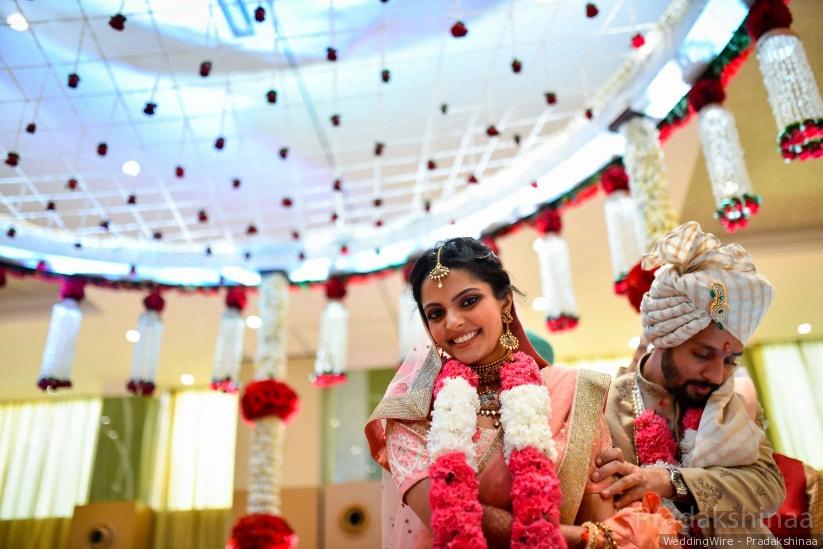
After performing all the above rituals, the bride and groom take four rounds around the Agni or sacred fire. The end of the bride’s sari and groom's ‘angavastra’ is tied in three knots by the groom’s sister, and the pheras are completed. Each phera signifies a promise - the bride prays for the long life and health of the groom while the latter vows to protect and care for her under all circumstances.
Kesh Mochan
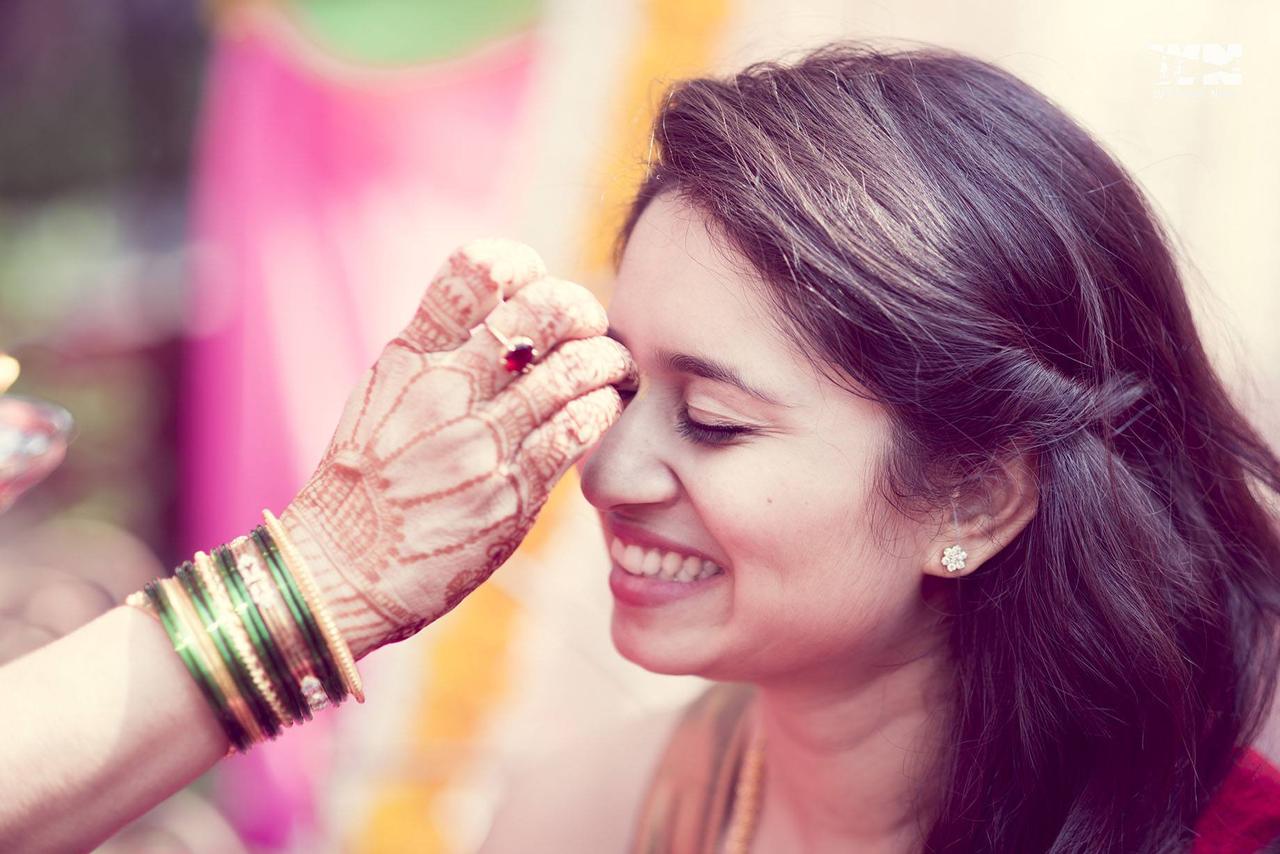
This tender ritual is where the groom opens the bride’s heart and lets it flow freely. Further mantras are recited, and the vows taken during Parikrama are reiterated.
Saptapadi & Hriday Sparsh Mantra

After the parikrama ceremony, the couple takes seven steps, or ‘Saptapadi,’ followed by one circle around the fire. The couple walks side by side and hand in hand.

Image Courtesy: Seema Singh
Right after the Saptapadi is done, the bride and the groom put their hands on each other’s hearts and make a promise of love and loyalty to each other.
Sindoor & Mangalsutra
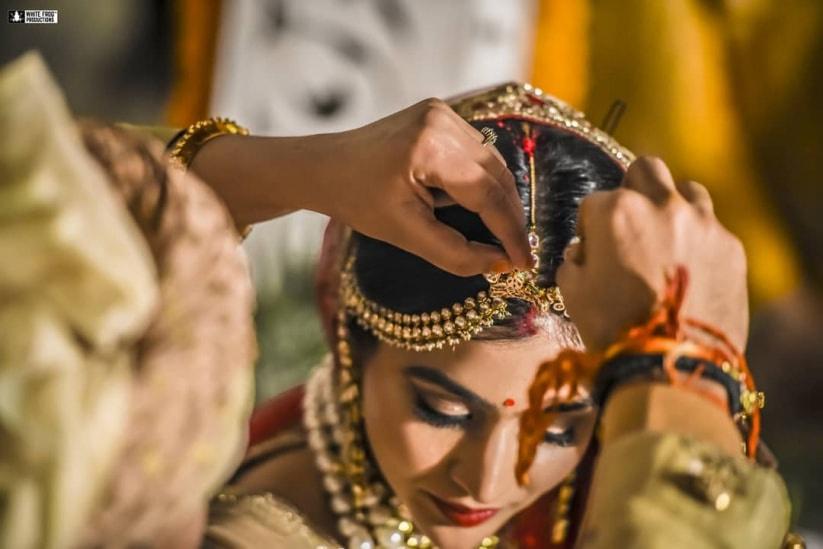
Arya Samaj weddings have this ceremony similar to all other Hindu ceremonies where the groom puts vermillion on the bride’s forehead. This is the official ceremony that declares the couple's man and wife. The wedding is considered valid for all intents and purposes at the end of this ceremony. The final ritual is for the groom to apply sindoor on the rides forehead and tie a Mangalsutra around her neck. The couple feed sweets to each other because no happy occasion is complete without sweets!
Surya Darshan
Surya Darshan, or the Sun greeting ceremony, follows next when the bride and groom worship the all-powerful sun together to bless them with a long life of health and prosperity.
Post-wedding rituals
Keeping the minimalist approach and integrity alive, the post-wedding rituals of an Arya Samaj wedding are also mesmerising.
Akhand Subhagyavati
Married women from the bride’s family come to wish her eternal happiness.
Ashirwaad
Ashirvaad is the Sanskrit word for blessings. After the marriage ceremony, the bride and groom seek the blessings of all the elders and family members assembled therein. Everyone then showers their blessings on the happily wed couple to live a life of love, happiness, and prosperity ever after.
Dhruv Darshan
The pole star, or Dhruv, is forever the one constant in the universe. To symbolise the constancy of their bond, the newlywed Arya Samaj couple is supposed to view the pole star together to be inspired and blessed by the paragon of perseverance and loyalty.
Reception
This is a common post-wedding ceremony similar to all other receptions in the world of weddings. In this ceremony, all guests come together for a grand feast. In millennial times, it is often accompanied by music and dancing. These ceremonies occur in the Arya Samaj Temples or a designated Arya Samaj marriage place.
How To Plan and Register an Arya Samaj Marriage in India?

Photography: WeddingNama
Planning an Arya Samaj wedding is efficient and straightforward. You need a few essential elements: the proper marriage documents, two jaimalas (garlands), and some sweets. It's crucial to book an Arya Samaj mandir (temple) and submit the necessary documents in advance to ensure everything goes smoothly. Read ahead to know the details of the Arya Samaj marriage procedure.
Eligibility for an Arya Samaj Marriage
To participate in an Arya Samaj wedding, the groom must be at least 21 years old, and the bride should be at least 18. The couple should belong to one of the following religions: Hinduism, Buddhism, Sikhism, or Jainism to be eligible for this marriage. For those outside these religions, there is a process called Shuddhi.
Shuddhi allows individuals from other faiths, such as Muslims, Christians, Parsis, and Jews, to convert to Hinduism voluntarily and then participate in an Arya Samaj wedding. The Arya Samaj is known for its progressive stance on inter-religious and inter-caste marriages, making it one of the most forward-thinking organisations in India.
Planning and Preparations
Planning an Arya Samaj marriage involves a few key steps. First, secure an Arya Samaj mandir (temple) for the ceremony, ensuring it aligns with your preferred date. Prepare essential items such as the yagna essentials, garlands and sweets for the ritual. The Arya Samaj marriage fees are nominal, depending on the institution. You can coordinate with the temple for any specific requirements and to finalise the schedule.
Additionally, gather all necessary documents and complete any required paperwork well in advance. This preparation ensures a smooth transition to the registration process, which is crucial for formalising your marriage. Read on to understand the steps for legal registration and obtaining your marriage certificate.
Legal Registration for Arya Samaj Marriage
Arya Samaj weddings are registered with a sub-divisional magistrate. In some areas, such as Delhi, online registration is available. After scheduling an appointment, typically about 15 days in advance, you must complete the required forms and provide documents verifying your date of birth, such as a birth certificate, passport-sized photographs, and a wedding photograph.
You may also include your wedding invitation card, though this is optional. A gazetted officer must attest the documents. Once submitted, the district court will issue a marriage certificate. Overall, the process for registering an Arya Samaj wedding is relatively straightforward.
Is Arya Samaj Marriage Legal?
Arya Samaj weddings are legally recognised in India under the Arya Samaj Marriage Validation Act of 1937 and the Hindu Marriage Act of 1955. Conducted according to Vedic traditions, these ceremonies are known for their simplicity and lack of idol worship. The Arya Samaj philosophy focuses on monotheism and Vedic principles, which are reflected in their wedding rituals. This makes Arya Samaj weddings attractive for couples seeking a straightforward, meaningful ceremony, especially those from different castes or religions who embrace the conversion process.
After the Arya Samaj marriage process, the temple authorities issue a marriage certificate. However, this certificate is not equivalent to legal registration. Couples must visit the sub-divisional magistrate’s office with the temple's original Arya Samaj marriage certificate and other required documents to register an Arya Samaj marriage legally.
Once the registration is complete, the government officially recognises the marriage, granting the couple all legal rights and responsibilities. Understanding this distinction is crucial for couples to ensure their marriage is valid in the eyes of the law. Legal registration secures the couple's marital status and provides protection and recognition under Indian law.
All About Arya Samaj Marriage Certificate
After the wedding, obtaining the official marriage certificate is a crucial step. The Arya Samaj temple’s certificate alone is insufficient for legal purposes, so you must complete the marriage registration process with the sub-divisional magistrate’s office. Here’s what you need to know about obtaining and registering an Arya Samaj marriage certificate:
- Appointment: Schedule an appointment with the magistrate’s office, preferably before the wedding, as the process may take up to two weeks.
- Filling the Registration Form: Complete the registration form with accurate details.
- Document Submission: Submit necessary documents, including:
- Proof of age and identity (e.g., birth certificates, Aadhar cards, or passports).
- Four passport-sized photographs of the bride and groom and a wedding photograph.
- Arya Samaj Mandir issued the original Arya Samaj marriage certificate.
- Optional: Wedding invitation card.
- Witness Requirement: Two witnesses must be present to sign the registration and have valid identification.
- Gazetted Officer Attestation: Ensure a gazetted officer attests all documents.
Once all formalities are completed, the magistrate’s office will issue a legally valid marriage certificate. This certificate provides legal recognition, granting the couple all rights and responsibilities under Indian law. Following these steps, couples can ensure their Arya Samaj marriage is spiritually meaningful and legally recognised.
Arya Samaj's marriages are designed to unite two people who share a deep connection, allowing them to spend their lives together until death parts them. Rooted in ancient Vedic traditions, Arya Samaj embraces modern values by supporting inter-caste and inter-religious marriages. This unique blend of tradition and progressiveness makes it an ideal way to begin your lifelong journey together.
With inputs from Sanyukta Dabas
Decoding Indian Weddings with WeddingWire India:
2. Decoding Hindu Punjabi Weddings

